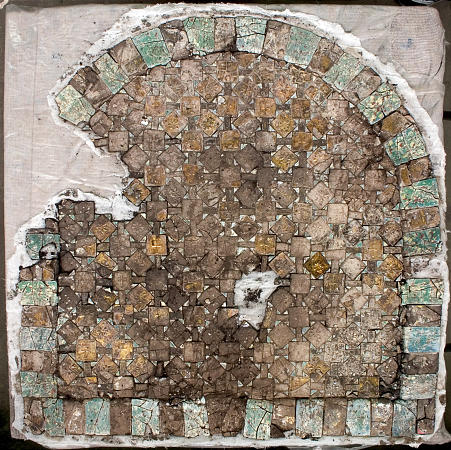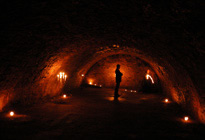They are supposed to helping broker a conflict between Morocco and the Polisario independence movement in Western Sahara. Evidently that leaves them a lot of free time to take spray cans to prehistoric engravings at the rock art site at Lajuad.
The most dramatic example of this is at Lajuad in the Southern Sector of the Polisario-controlled zone, where MINURSO recently installed some communications hardware on the inaccessible (except by helicopter) summit of a smooth granite hill. It appears that the MINURSO personnel responsible for the installation amused themselves by spray-painting their names on the wall of a rockshelter that is also an important archaeological site (see photos). Although the paintings and engravings in this shelter are somewhat faint, it is difficult not to notice that the wall defaced by the MINURSO personnel houses ancient paintings and engravings, as does the floor of the shelter.
 See those zig-zags like on Charlie Brown’s shirt with the lines dropping down? They’re faint already on account of they’re thousands of frikkin’ years old. Ahmed’s stupid frikkin’ tag sure doesn’t help matters.
See those zig-zags like on Charlie Brown’s shirt with the lines dropping down? They’re faint already on account of they’re thousands of frikkin’ years old. Ahmed’s stupid frikkin’ tag sure doesn’t help matters.
It’s not the first time the rock face has been scribbled on — some of the graffiti goes back to the beginning of the 20th century — but these scrawls are huge and they were done by people who were supposed to be there to help. Now UNESCO has to clean up the mess their colleagues in the UN made.


 Under Edinburgh there’s a whole scary
Under Edinburgh there’s a whole scary 